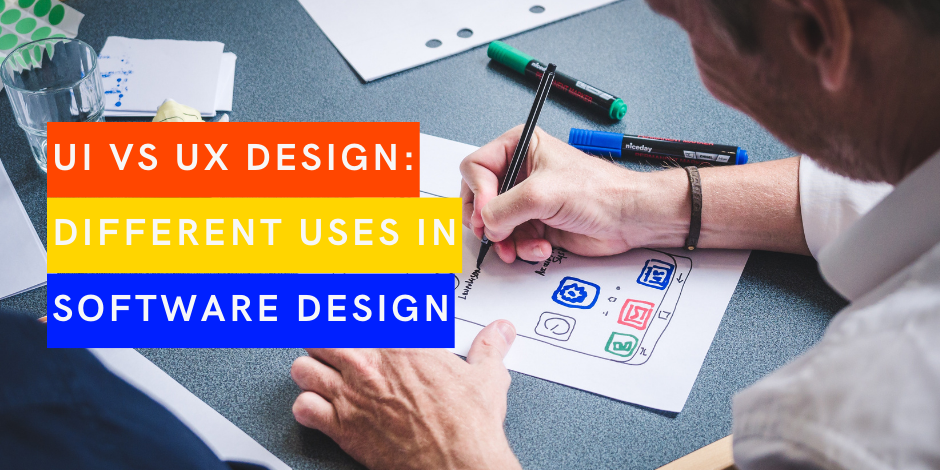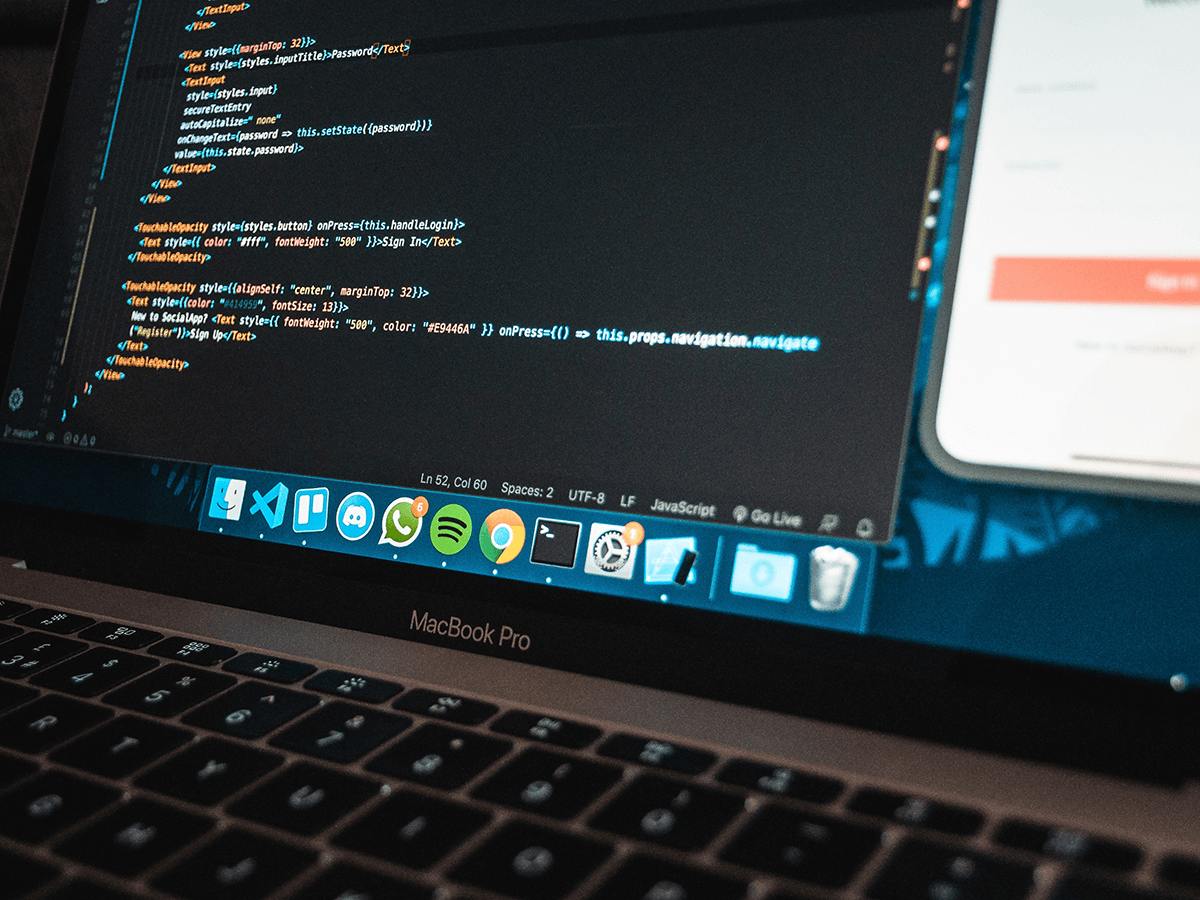UI vs UX Design: Different Uses in Software Design

Stay Informed With Our Weekly Newsletter
Receive crucial updates on the ever-evolving landscape of technology and innovation.
UI vs UX Design: what is the difference between the two? They are often considered the same concept, but the reality is that they are two different concepts related to the same root concept. As a designer, it is essential to learn the differences in their purposes and application before choosing the career that suits your passion and skill set best.
Read on to learn how each concept helps in designing business solutions and what is the right strategy to break each of these fields as a budding designer!
What is the difference between UI vs UX design?

UI design (user interface design) concerns the structure of product and web app designs. In contrast, its counterpart UX design (user experience design), ensures that the design decisions and styles contribute towards a better user experience.
UI design is an excellent measure of creative excellence, without a doubt. However, UX design is still more impactful when making better executive decisions and succeeding as a business.
In the subsequent sections, we will discuss the purpose of each concept in design processes, what to consider before you pursue them as a career pathway, and the professional responsibilities you can expect after you are hired:
Purpose in product design

While the importance of both systems is exceptionally vital in product design, there are key differences depending on the role they are supposed to play in the overall operation. For example, UX design is interrelated to the building foundation of digital software, which is why it comes first. Not only that, this system is responsible for your overall interaction with a digital product and consists of your customer’s experience, which is influenced by this interaction.
On the other hand, UI design comes after UX because it relates to the elements responsible for creating an interface for you, as a consumer, to interact with. Therefore, it is essential for these secondary elements, such as icons and buttons, to come once the fundamental design has been established.
This can be associated with the likeness of building a house, where the visual design parts can only be created and placed after the foundation is firmly in place. Similarly, the UX system gives an idea of how the inner elements of the final product will connect, and it also ensures that they have been placed most practically to ensure efficiency.
Pre-Requisite Skills
Since both fields fall within a similar career boundary, they share several skills. However, their end goal and responsibilities drift apart between research and design. That is why professionals in each field need strength in their specific skill sets.
Every design element must be functional and usable, making extensive visual design knowledge one of these common pre-requisite skills.
Another skill that both UI and UX designers hone is a thorough understanding of IA, also known as information architecture, as this focuses on making the product interface usable for the customers. Since the success of any product depends on how well a user can understand it and knows what to look forward to, the organisation of the content within the system is of utmost importance.
As for the skills specifically required by UX designers, one is the ability to know the most foolproof and effective methods of testing the product’s usability after it is created. Since much of their work is centred around gathering research and making decisions based on that data, UX designers must be comfortable with various research tools for different products and purposes. This skill might intertwine with the role of a UX researcher, but it is also ideal for a designer to hone it.
A UI designer will need to be able to coordinate flawlessly with the UX designers as well as the primary developing team. This field will also require professionals to maintain expertise in different types of system designs, such as visual and interactive design, to ensure a well-made final product.
Training
If you wish to pursue a career in UX or UI design, picking a training route such as a boot camp is a good option, as this will allow you to get good hands-on experience with aspects such as building prototypes and creating designs. Furthermore, most bootcamps centre on building experience with practical products and solutions. Therefore, reworking the projects you develop during your coursework and pitching them as relevant portfolio pieces during job applications is possible. However, physical boot camps may only be available in metropolitan areas, which could be a potential drawback for some.
On the other hand, choosing to study your career path through a university course is also a sensible decision. Unlike the shorter timeframe of a boot camp, university candidates will have the advantage of submerging in the course topics thoroughly over multiple years, usually more than two. Moreover, compared to alternative training methods, going to a university also automatically adds instant leverage to your CV, especially if you have yet to gain experience as a worker.
Suppose you want to do something suited to your own pace. In that case, many courses and other resources are available online through educational videos or apps. With the option of being flexible with your schedule and cutting down on the expenses attached to the other options, you can benefit significantly from the vast amount of free content. To learn more about digital upskilling and how it can impact your career, check out our guide on the topic!
Of course, you will need to understand that while such resources are excellent assistance, nothing can beat the benefits of having a proper training course with a mentor, whether online or offline. This will also allow you to build a more robust CV and get reliable instructor references.
Professional responsibilities
After a UX designer has gathered the necessary research to make up a design, the UI designer will take that design brief and turn it into a working prototype that follows the company’s brand style guide and fits the requirements of good visual design.
It is essential to establish that the design choices they make in the end-product work across a range of devices, and this can only be established after rigorous testing. Design decisions like picking out the typography or the right colour combination in an advertisement can be based on research and a designer’s better judgement. Choices like optimising the interface panels require collaboration with different teams and senior management.
As for the UX designer, they will focus on how a customer reacts to the proposed design and conduct research to establish which elements impact the user’s overall satisfaction, both positively and negatively. This will include conducting tests and interviews, preparing different content pieces, and working with UI designers and other teams for the best results and efficient implementation of solutions.
In a nutshell, the UX designer will ensure that the final product’s interface, design, content elements and responsiveness provide the required results for a business. On the other hand, the UI designer will use their research to make improved design decisions.
Career opportunities
Overall, there are more job opportunities in the UX space since several UX designers can apply for UI jobs than vice versa.
UI design can be a good fit for you if you enjoy solving issues, appreciate diversity, and are interested in technology. Therefore, you should consider a career in it if you have a keen aesthetic sense and are a creative thinker. As for the UI designer’s salary and the UX designer’s salaries, they often make more than the average American’s annual income, at least regarding compensation expectations.
Nevertheless, you will discover that there are more and more prosperous chances for UI designers in tech sectors outside of the web and mobile business sectors since that is where this particular field is not only more established but also has a more direct, business-driven application.
What are the benefits of learning UI design?

A career in UI design is excellent for artists who want to build excellent products with superior visual aesthetics. Since computers and the products/services associated with them have become more accessible over the past few decades, it is essential to design modern interfaces around the end-user’s needs.
Designing a good interface requires more effort than picking colour combinations and typography. First, you must understand the target audience and the design choices that appeal best to them. The role is satisfying for people who enjoy solo work and teamwork, as their creative input is also required for technical problem-solving. To learn about the top 10 software technologies to learn in 2023 including UI/UX design, check out our detailed guide on the topic!
Once you create a seamless design as part of your role, the euphoria of creation does not fade since you see how one design fits into an entire picture. Hopefully, it will continue to be used over a considerable period, which makes your initial efforts more meaningful. In addition, you will have opportunities to use your skill set in other areas, and you can quickly shift to a UX or senior graphic designer role.
If you work with mobile and web apps, you can learn the science behind developing core designs and work as a developer for a firm. The opportunities are endless, but you should be open to upskilling and learning skills like client handling, writing, wireframing and research.
Before users step into the product experience journey, the first impression they will make of the company is from the visuals on their screen. As a UI designer, you ensure these visual styles cater to the structures and guidelines that best comply with industrial design regulations and the end consumer’s needs.
What are the benefits of learning UX design?

An excellent cognitive scientist initially termed UX design at an Apple office in the 90s. Anyone who has heard of Apple knows their focus on creating minimalistic designs that deliver above-excellent results. According to Don Norman, this is precisely what the user experience is about.
This field is an excellent career for individuals who like to analyse their creative pursuits and are excited by remote work and freelancing. Other benefits to choosing a career as a UI designer include excellent pay, potentially meaningful work and job security since design always stays in style!
After the user interface has been developed, UX designers contribute to the final piece with usability and style improvements while ensuring that the designs reflect good branding. This incorporates several responsibilities in the overall process, from giving suggestions in design and development and monitoring product interaction for the end-user.
They must also consider marketing medians and the different platforms for hosting the product/service. If the user feels positively fulfilled after their experience, it is a job well done for the UX designer!
Conclusion
Overall, it is clear that both UX and UI design serve a meaningful purpose in helping modern businesses deliver appealing and efficient solutions.
If you are excited to build your career in the tech industry, book a career consultation with one of our experts today!




